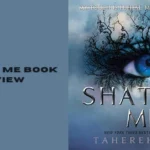Introduction to Divine Rivals
In a world filled with conflict and competition, the term “divine rivals” often evokes images of heated battles and fierce enemies. Yet, underneath this surface lies a rich tapestry of human connection forged through letters. These simple pieces of correspondence have played pivotal roles in shaping history, especially during times of war. They reveal unexpected emotional depths between adversaries and illuminate how relationships can blossom even amid chaos.
As we explore the fascinating dynamics between divine rivals throughout history, we’ll uncover stories that showcase not just rivalry but also respect, understanding, and friendship born from shared experiences. Letters have served as bridges across chasms of animosity, proving that even in the darkest times, humanity finds ways to connect. Join us on this journey as we delve into the storied past of letter writing amidst conflict and discover how these written words continue to resonate today.
The Origin of Letters in Ancient Times
The art of letter writing has roots that stretch back to ancient civilizations. The earliest forms of written communication emerged in Mesopotamia around 3200 BC, where cuneiform tablets were used to convey messages.
These inscriptions weren’t just practical; they held immense significance. They documented trade agreements and royal decrees, laying the foundation for administrative systems.
Egyptians later contributed with hieroglyphs on papyrus, creating a more visually engaging way to communicate across distances. These letters often carried personal sentiments—love notes or invitations—showing an early understanding of human connection.
As empires expanded, so did the need for correspondence between leaders and their armies. Letters became vital tools in diplomacy and strategy amid rising tensions.
In essence, these ancient practices set the stage for modern communication, intertwining language with relationships long before technology transformed how we connect today.
The Use of Letters in War
Letters have always played a critical role in warfare. They served as vital tools for communication between commanders and soldiers. In the chaos of battle, written words could convey strategies, orders, or even last wishes.
The act of writing offered a moment of reflection amidst turmoil. Soldiers penned letters to loved ones back home, often expressing fears and hopes. These messages provided comfort during dark times.
On the battlefield, coded messages became essential for maintaining secrecy. Encrypted letters ensured that plans remained hidden from enemy eyes. Such ingenuity often turned the tide in crucial moments.
Famous correspondences also emerged during conflicts like World War I and II. Leaders exchanged letters that shaped alliances and influenced outcomes.
Letters humanized war by reminding us that behind each soldier was a story waiting to be told—a connection yearning to bridge even the deepest divides created by conflict.
Unlikely Bonds Formed Through Correspondence
Correspondence has often served as a bridge between enemies. In times of war, letters can reveal the humanity behind opposing forces. They show that even in conflict, there is room for understanding.
Take the example of soldiers on opposite sides exchanging messages. These notes sometimes reflect shared fears and hopes, creating unexpected connections amidst chaos. A simple letter can transform a faceless enemy into a relatable individual with dreams and family.
Historical records highlight these poignant exchanges during World War I, where soldiers communicated across trenches on Christmas Day. This moment marked an extraordinary pause in hostilities, showcasing how correspondence fosters empathy.
Such bonds remind us that words have power beyond mere communication; they cultivate compassion even amid rivalry. The fragility of peace is evident when individuals choose to reach out rather than retaliate—an act that resonates through time and space.
Famous Examples of Divine Rivalries in History
Throughout history, divine rivalries have emerged that showcase the complexity of human relationships. One notable example is the fierce competition between Alexander the Great and Darius III of Persia. Their clash wasn’t just a battle for territory; it was a contest of wills driven by pride.
Another compelling instance involves Thomas Jefferson and John Adams. Despite their political rivalry, they maintained a profound friendship through letters long after their presidencies ended. Their correspondence revealed deep philosophical disagreements yet fostered mutual respect.
In literature, we find the bitter rivalry between writers Lord Byron and Percy Bysshe Shelley. Their contrasting styles and ideologies fueled both conflict and collaboration in the Romantic era.
These examples highlight how even fierce opponents can inspire growth, reflection, or unexpected camaraderie amid strife. The narratives woven through these divine rivalries continue to resonate with us today.
Modern Day Applications and Lessons Learned from Divine Rivals
In today’s digital age, the art of letter writing may seem archaic, yet its essence lives on in our communications. Emails and messages often lack the depth that handwritten notes once provided.
Divine rivals teach us about vulnerability and connection. When we express our thoughts through words, barriers dissolve. This can lead to unexpected friendships or alliances, even among competitors.
Social media has introduced a modern twist to this concept. Public discussions between rivals can create dialogue that fosters understanding rather than animosity.
Businesses frequently engage in healthy competition while learning from one another’s successes and failures. These interactions often spark innovation born out of rivalry.
To cultivate stronger relationships both personally and professionally, embrace open communication inspired by historical letters. A simple note or message might bridge divides we never thought could be crossed.
Conclusion: How Letters and War can Bring Unexpected Connections
Letters have a unique power. They bridge gaps, build connections, and even foster unexpected friendships amidst the chaos of war. Throughout history, divine rivals have exchanged correspondence that transcends animosity. These letters reveal humanity in the most unlikely places.
Consider how soldiers from opposing sides poured out their hearts on paper during fierce battles. Their words often softened hardened perspectives and offered glimpses into shared struggles. This ability to connect through written expression is timeless.
Today’s world may differ vastly from ancient battlegrounds, yet the lessons remain relevant. We face divisions daily—be it political, cultural, or personal. Embracing communication can lead us toward understanding rather than conflict.
The narrative of divine rivals teaches us that beneath every rivalry lies potential for connection. War may create barriers but letters can dismantle them one message at a time. The next time you feel divided from someone else, remember: your words might just pave the way to an unexpected bond.
FAQs
What is “Divine Rivals”?
“Divine Rivals” refers to individuals or groups in history who are locked in intense competition or conflict, yet their interactions through letters reveal unexpected emotional connections and human understanding. These written communications bridge the divide between adversaries, showcasing that even in the darkest times, empathy and respect can emerge despite rivalry.
How did letters influence warfare in ancient times?
In ancient times, letters were crucial for communication between leaders and their armies. They provided updates, strategies, and morale boosts. These letters could be used to convey everything from royal decrees to soldiers’ last wishes, helping maintain order amidst chaos and facilitating diplomacy.
Can you provide an example of unlikely bonds formed through letters during wartime?
One example is the Christmas truce during World War I, where soldiers from opposing sides exchanged letters and even celebrated together. Despite the ongoing conflict, these correspondences helped humanize the enemy and foster temporary peace, highlighting the power of words to create empathy.
Why are the stories of divine rivals still relevant today?
Divine rivalries remind us of the power of communication. In today’s world, even with digital messages, we can learn from these historical examples and understand how rivalry can lead to unexpected alliances, whether in politics, business, or personal relationships. Open dialogue can turn competition into collaboration.
What is the lasting impact of letter writing in shaping human relationships?
Letter writing, even in the digital age, teaches us vulnerability, connection, and the ability to communicate across divides. Letters have historically created bridges between enemies and inspired reflection. Today, we can still use this approach to build understanding and resolve conflicts, proving that thoughtful communication transcends time.







